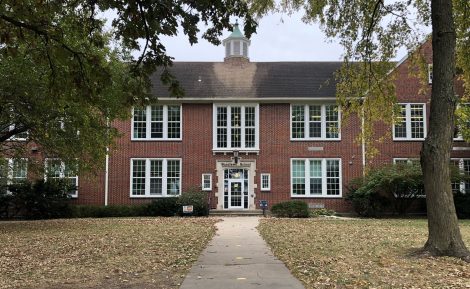Lawrence public schools have little room for improvement
(In)adequate yearly progress
Here are the eight schools in the Lawrence school district that fell short of “adequate yearly progress” standards for 2010, listed with the subjects and subgroups in which they missed:
• Cordley, reading and math for students receiving free and reduced-price lunches.
• Kennedy, reading for all students, white students, students with disabilities, and students receiving free and reduced-price lunches.
• Pinckney, reading for students with disabilities.
• Schwegler, reading for students receiving free and reduced-price lunches; and math for all students, and students receiving free and reduced-price lunches.
• Central Junior High, reading and math for students with disabilities.
• South Junior High, reading for black students, and students with disabilities; and math for all students, students with disabilities, black students, and students receiving free and reduced-price lunches.
• Lawrence High, reading for all students, students with disabilities, black students, and students receiving free and reduced-price lunches; and math for black students.
• Lawrence Virtual, reading for students with disabilities, and students receiving free and reduced-price lunches; and math for all students, students with disabilities, and students receiving free and reduced-price lunches.
Also, for the second consecutive year, the Lawrence school district missed AYP for students with disabilities.
Overall, better than eight of every 10 students in Lawrence public schools achieved proficiency or higher on state assessment tests in math. Nearly nine in 10 hit that level in reading.
But the numbers don’t always hold up within certain populations of students, Lawrence school board members learned Monday night.
Turns out eight of the district’s schools fell short of standards needed to achieve “adequate yearly progress” within at least one of 20 subgroups of students that the state tracks on assessment tests as part of the federal No Child Left Behind Act.
And the district itself missed for the second consecutive year regarding results for students with disabilities. That means the district is now “on improvement,” a designation that requires targeted spending on special programs designed to improve test scores.
Board members listened as administrators said they would review curriculum, classroom assessments and, in some cases, instruction in math; extend after-school tutoring for students needing help in reading and math; and consider buying a data-warehousing system to help teachers tap into assessments and other data to help individual students.
“The great thing about this is the district personnel are aware of the concerns and they have a plan to address it and get in there and fix it,” said board member Vanessa Sanburn.
Because the district is “on improvement,” administrators know they will need to spend $175,554 — that’s 10 percent of the money the federal government provides for schools with a relatively high percentage of students receiving free and reduced-price lunches — on professional development for teachers, to help them strive for improving test scores.
Of some 10,000 students in the district, about 1,350 are identified as having disabilities.
“We have some room for improvement ,” said Kim Bodensteiner, the district’s chief academic officer. “It’s a challenge for all of us, but it is for every district in the state, so we all have to try to learn to do it better.”
Board member Scott Morgan noted that, overall, students in grades three through 12 had performed admirably on the assessments:
• 88.6 percent reached or surpassed proficiency in reading, for which the target level was 81.3 percent.
• 83.8 percent of students hit or surpassed proficiency in math, for which the target was 76.4 percent.
It’s when results are separated into subgroups — based on disabilities, economic status, race or other factors — that some weaknesses in adequate yearly progress, or AYP, get exposed. Such testing began in 2002, and never before have so many Lawrence schools fallen short of the standard in at least one of the subgroups.
“We want to get better everywhere, but our issues are not districtwide,” Morgan said. “We have focused groups, (where) we need to target our resources, our energy. And we waste an awful lot of energy if we don’t look at the really good news in here, which is that almost 90 percent of our kids are ‘there’ on reading, and almost 84 are ‘there’ on math. …
“If we can keep that in mind … we can focus our energy on where it needs to go, and those kids that need the help.”
AYP standards increase annually. This year, for example, 83.7 percent of students in grades three through eight were required to reach proficiency in reading; a year ago, the threshold was 82.3 percent.
By 2014, all students are to reach proficiency or better in both reading and math.
“It’s more difficult to attain those targets each year,” said Terry McEwen, the district’s division director for assessment, research, grants and school improvement. “That’s a given.”
Overall, 17 of the district’s 22 schools either maintained or improved their performances on the assessment tests compared with a year ago. More than 95 percent of students at Southwest Junior High School made “proficient or above” in both reading and math.
Woodlawn School is a state nominee to be designated a national “Blue Ribbon School of Excellence,” an award won a year ago by Broken Arrow School.
“The board recognizes that our faculty and our students and our parents — everybody — is doing a really good job here,” said Rich Minder, board president. “Some things are just going to happen. That doesn’t mean that we all have to get alarmist.”







